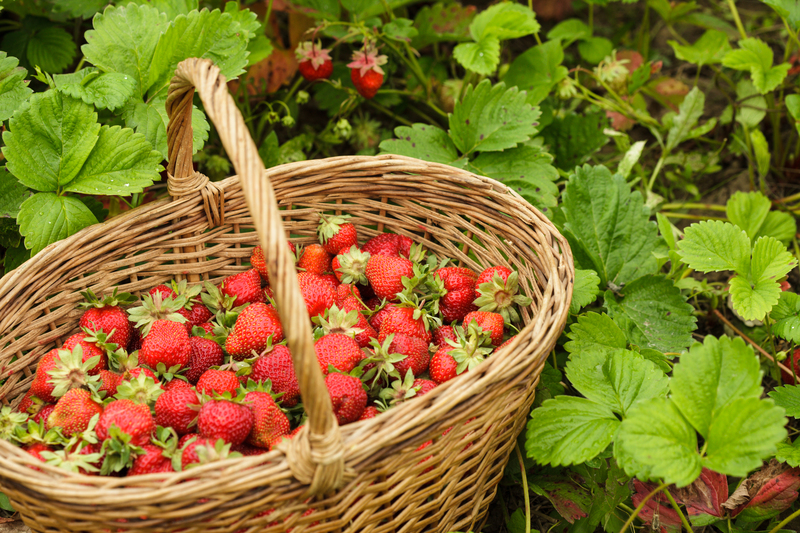The Green Path: Using Gardens to Mitigate Climate Change
Posted on 01/09/2025
The Green Path: Using Gardens to Mitigate Climate Change
Climate change is one of the most pressing environmental issues of our time. As global temperatures rise, ecosystems are strained, weather patterns shift, and communities around the world face increasing threats from drought, floods, and heatwaves. While large-scale solutions often steal the spotlight, individual and community actions also play a crucial role. One powerful and accessible way to make a difference is by creating and maintaining gardens. This article explores how gardens can help mitigate climate change, with actionable tips and insights for garden enthusiasts, homeowners, and anyone interested in making a positive impact on our planet.

Understanding the Connection: Gardens and Climate Change
At first glance, the humble garden might appear insignificant against the backdrop of soaring greenhouse gas emissions. However, gardens offer multifaceted environmental benefits that directly address climate change. By transforming yards, balconies, and community plots into green spaces, we harness natural processes to absorb carbon, conserve water, nurture biodiversity, and build resilience in local ecosystems.
Carbon Sequestration: How Plants Capture Carbon
Perhaps the most significant way gardens combat climate change is by sequestering carbon dioxide (CO2), one of the primary greenhouse gases responsible for global warming. Through photosynthesis, plants capture CO2 from the atmosphere and convert it into organic matter, including roots, stems, and leaves. This process not only fuels plant growth but also removes excess CO2 from the air.
- Trees and shrubs act as long-term carbon sinks, storing carbon in woody tissue for years or even decades.
- Soil in healthy gardens accumulates organic carbon, especially when gardeners add compost or practice "no-dig" methods.
- Perennial plants offer ongoing carbon capture without the need for frequent replanting.
By increasing the density and diversity of vegetation in our gardens, we can maximize their carbon absorption potential and make a real contribution to climate change mitigation.
Boosting Biodiversity: Habitats for Wildlife
Biodiverse gardens are powerful tools in the fight against climate change. Diverse plant life supports pollinators like bees, butterflies, and birds, which are essential for ecosystem health and food production. In turn, healthy ecosystems are more resilient to climate disruptions and can recover more rapidly from disturbances.
- Cultivate native plants for local wildlife, reducing the need for water and fertilizers.
- Include features like ponds, log piles, or wildflower meadows to attract a variety of species.
- Practice organic gardening to avoid harming beneficial insects and the broader ecosystem.
Gardens that support biodiversity act as refuges for species threatened by habitat loss and changing climates, making urban and suburban areas part of a green corridor that connects fragmented ecosystems.
Reducing Urban Heat Islands: Cooling with Greenery
In cities, expanses of concrete and asphalt absorb and radiate heat, causing temperatures to rise dramatically--a phenomenon known as the urban heat island effect. Green spaces, including gardens, help counteract this effect by providing shade, increasing evaporation, and absorbing less heat than hard surfaces.
- Planting trees strategically around homes can reduce indoor temperatures by several degrees, lowering the need for air conditioning and reducing energy consumption.
- Living roofs and vertical gardens further cool and insulate buildings, contributing to a more comfortable urban climate.
By incorporating more greenery into our built environment, we can make cities more livable and sustainable in the face of a changing climate.
Water Conservation and Management
Climate change is intensifying droughts and altering rainfall patterns worldwide. Gardens designed for water efficiency not only adapt to these challenges but also help reduce run-off and erosion.
- Rain gardens capture and filter stormwater, preventing pollutants from entering waterways and replenishing groundwater supplies.
- Xeriscaping--using drought-tolerant plants--minimizes the need for irrigation, making gardens more sustainable during dry spells.
- Mulching and composting improve soil structure, enhance moisture retention, and reduce water loss.
Through these practices, gardens become part of the solution to climate-induced water stresses.
Designing Gardens for Maximum Climate Impact
Create a Carbon-Positive Garden
Transforming your garden into a carbon-positive zone involves making conscious choices about plant selection, soil management, and maintenance routines:
- Plant more trees and shrubs: Even a small yard can accommodate fruit trees or fast-growing native species that store carbon efficiently.
- Prioritize perennials over annuals: Perennial vegetables, herbs, and flowers return year after year, building up soil carbon and reducing disturbance.
- Let your lawn go wild: Lawns absorb little carbon and often require pesticides and fertilizers. Replacing turf with wildflowers, native grasses, or edible plants increases biodiversity and carbon storage.
Soil Health: The Hidden Engine of Climate Mitigation
Healthy soil is the foundation of climate-friendly gardening. Soil stores more carbon than all the world's plants and atmosphere combined. Therefore, managing soil properly is critical in the fight against global warming:
- Add organic matter regularly: Use compost, leaf mold, or well-rotted manure to build up the soil's carbon content.
- Minimize digging: Adopt "no-dig" or "no-till" methods to avoid releasing stored carbon.
- Grow cover crops during the off-season: Plants like clover or vetch prevent erosion and add nutrients, keeping soil microbes active year-round.
By focusing on soil health, gardeners can trap more carbon while building productive and resilient plots.
Composting: Recycling Nutrients, Cutting Emissions
Composting is a simple yet powerful tool for climate change mitigation:
- Diverting food and yard waste from landfills reduces methane emissions, a greenhouse gas far more potent than CO2.
- Finished compost enriches soil, allowing plants to grow more vigorously and absorb more carbon.
- Composting at home means fewer trucks hauling waste, reducing fossil fuel use and air pollution.
Setting up a compost bin or heap is easy, and composting can fit into gardens of all sizes--even on balconies!
Water-Smart Gardening
With water scarcity worsening, gardeners must become water-wise:
- Collect rainwater in barrels to irrigate your garden without relying on municipal supplies.
- Drip irrigation and soaker hoses target water right at plant roots, preventing waste.
- Choose mulch materials that break down slowly, such as bark chips or straw, to preserve moisture longer.
Reducing Chemical Inputs
Minimizing the use of synthetic fertilizers and pesticides not only protects pollinators and soil microbes--but also reduces fossil fuel emissions associated with their production. Try these climate-friendly alternatives:
- Use organic mulches and compost to nourish soil naturally.
- Encourage beneficial insects by planting diverse species and providing habitats.
- Rotate crops and interplant with companion species to reduce pests and diseases.
Community Gardening: Scaling Up the Climate Solution
While individual gardens are important, the collective impact of community gardening can be transformative. Urban farms, shared plots, and edible landscapes offer many climate benefits:
- They increase green cover, making neighborhoods cooler and cleaner.
- They provide local food, reducing the carbon footprint of transportation and packaging.
- Education and engagement: Community gardens teach sustainable practices and inspire broader climate action.
Edible Gardens: Food Resilience for a Hotter World
Growing food close to home is a powerful climate strategy:
- Reduces reliance on global supply chains, which are vulnerable to climate disruptions.
- Cuts greenhouse gas emissions linked to food transport, refrigeration, and processing.
- Fresh, local produce often comes with less packaging and waste.
Whether it's a backyard vegetable patch, allotment plot, or balcony herb garden, edible gardens build food security and climate resilience.
Gardens as Living Classrooms
Community and school gardens serve as living classrooms where people of all ages can learn about sustainability, ecology, and climate action. Working together, gardeners can share seeds, knowledge, and resources, spreading green practices throughout neighborhoods and cities.
Challenges and Considerations
Climate-Smart Plant Choices
As climates shift, some traditional garden favorites may no longer thrive. To keep gardens resilient--and maximize their climate benefits--consider these tips:
- Choose drought-resistant or heat-tolerant varieties for regions experiencing hotter, drier summers.
- Include native plants, which are adapted to local conditions and require less maintenance.
- Be mindful of invasive species, which can outcompete natives and reduce biodiversity.
Balancing Beauty and Sustainability
Many people want gardens that are both attractive and eco-friendly. Fortunately, sustainability and style can coexist:
- Mix ornamental and edible plants in flower beds for color and productivity.
- Design with pollinators in mind by including blooms throughout the growing season.
- Use permeable pathways and organic mulches to create inviting, low-maintenance spaces.

Taking the First Steps on the Green Path
Whether you have acres of land or a single window box, every garden counts in the global movement to combat climate change. Here's how you can begin your journey on the green path:
- Start small: Plant a tree, create a pollinator patch, or begin composting kitchen scraps.
- Join or support a local community garden initiative.
- Share your success and inspire others with your own climate-friendly gardening story.
Resources for Green Gardeners
For more information on sustainable gardening, climate-resilient plants, and garden design, explore these resources:
- Royal Horticultural Society: Climate Change Gardening
- USDA: Conservation Through Gardening
- Nature Conservancy: How Urban Gardens Can Help Solve Climate Change
Conclusion: Cultivating Hope and Change with Gardens
Climate change may seem overwhelming, but gardens offer a tangible way to build a better world--one yard, block, and community at a time. By capturing carbon, nurturing biodiversity, cooling our cities, conserving water, and fostering community, gardens are more than just sanctuaries for people--they are green engines of environmental change.
Step outside, put your hands in the soil, and join the movement along the green path. Every plant and patch of earth can make a difference in the fight to mitigate climate change and restore the balance of our planet for generations to come.

